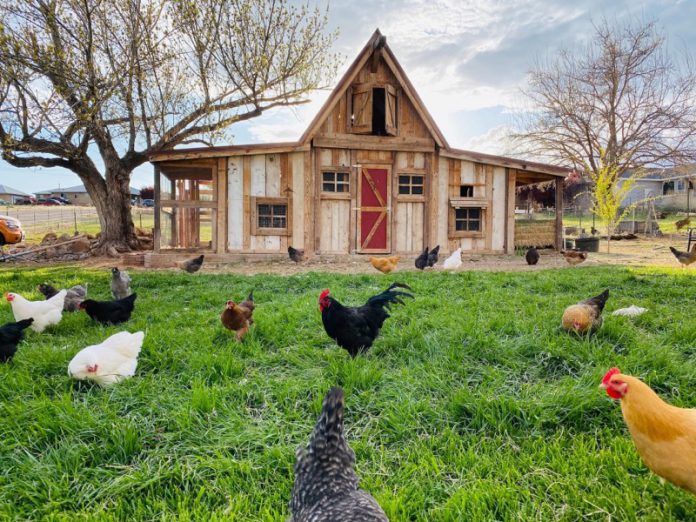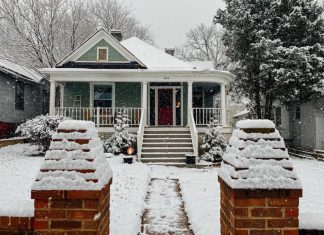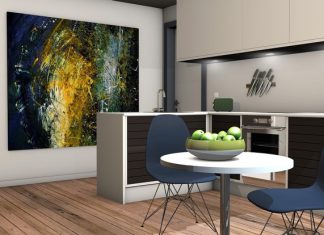Building a chicken coop may be one of the top items on your to-do list if you plan to raise a flock of chickens. A stereotypical image of a chicken coop consists of a mini house-like structure made of weathered wood. However, the sight of a chicken coop in the center of your backyard could disrupt the visual appeal and potentially spoil the overall look of your garden.
Yet, there’s no rule stating your chicken coop has to adhere to traditional designs. Designing a coop that perfectly balances practicality and style is possible. But before giving you insightful tips for backyard aesthetics, it’s essential to grasp the basics of designing a chicken coop.
Parts of a Chicken Coop
What’s in a chicken coop, anyway? A chicken coop has five basic components, each serving a purpose in ensuring your chickens’ comfort and helping you manage maintenance work better.
Roof
The roof of the chicken coop protects your flock from exposure to extreme weather conditions such as heavy rain or hot sunlight. You can choose from various materials, such as plastic or metal roofing.
Walls
The walls also protect your flock from harsh elements such as strong winds. You can build walls using wood, plastic, or metal.
Flooring
The flooring serves as the base for your chicken coop. As with the roof and walls, there are several options for choosing the flooring. Most chicken coop builders choose materials that are easy to clean and maintain, such as plywood, linoleum, and concrete. You can add bedding such as straw and paper on top of the floor to cushion the chickens.
Nesting Box
A nesting box provides a place for hens to lay their eggs. Hens prefer to lay their eggs in dark and secluded areas with comfortable bedding, so aim to simulate these conditions when building a nesting box.
Roosts

Chickens instinctively sleep on high ground to ensure survival in the wild. Roosts are bars installed above the ground where your chickens can perch to sleep. Typically, builders install roosts at least 18 inches above the ground or the chicken coop floor.
Optional: Chicken Coop Run

Depending on the available space, you may also want to attach a chicken coop run. As the name suggests, a chicken coop run is an enclosed space that allows chickens to run about. Runs are usually enclosed with chicken wire screens to shield against predators such as birds of prey and coyotes.
Factors to Consider in Chicken Coop Design
Aside from its basic components, there are other factors you should consider in designing a chicken coop.
Space
In building your chicken coop, you need to have ample space to raise healthy and happy chickens. A tightly packed chicken coop can accelerate the transfer of disease-causing bacteria and viruses. Overcrowding can also exert mental stress on your chickens, which leads to the development of bad habits such as egg eating and bullying.
Ventilation
Proper ventilation helps maintain the temperature inside the coop, control moisture and odor, prevent disease, and offer comfort and productivity.
Chickens produce a lot of moisture through their respiration and droppings. Poorly ventilated coop can lead to dampness and condensation, which encourages mold growth and can lead to respiratory issues in chickens.
A well-ventilated coop ensures a cleaner and healthier environment, reducing the chance of disease transmission and odor from stale and foul-smelling air. It helps to circulate fresh air and carry away harmful gases like ammonia from chicken droppings.
Temperature
Chickens thrive well when living in temperatures between 60 to 75 degrees Fahrenheit. Thus, building a chicken coop that can maintain these conditions regardless of the external temperature is essential.
Tips to Design the Perfect Chicken Coop
Once you have all the basic components and factors, it’s time to design the perfect chicken coop. Below are some tips you can follow.
Tip #1: Paint Your Coop
Who says chicken coops have to be boring? Painting is an easy way to inject personality into the structure. You can have it match your backyard’s aesthetic or make it stand out. Some novel ideas include painting your coop red and white to mimic a barn or pastel colors for a softer overall look.
Aside from beautifying your coop, paint has the added benefit of protecting it and making it easier to clean. Applying paint on the wooden walls of the coop serves as a protective measure to deter the infestation of wood-boring insects.
You can also paint the chicken coop interior with limewash to brighten it and protect the walls from burrowing insects. Plus, it’s non-toxic for chickens. Be sure to reapply the whitewash annually to maintain its color.
Tip #2: Match Your Home’s Design
You can take inspiration from many architectural styles when designing your chicken coop. You can even match the style of your home! You can also adopt the same level of durability and functionality in your materials and construction methods to give your chickens a comfortable home.
Tip #3: Increase Ceiling Height

Consider designing a chicken coop with a taller ceiling height. A taller height prevents overcrowding by providing more vertical space for your chickens. It also improves air circulation within the chicken coop. Extend the ceiling height to accommodate a standing person, making egg harvesting and coop cleaning more convenient.
Tip #4: Incorporate Greenery
Another way to beautify your chicken coop is to surround it with greenery. Aside from improving the coop’s looks, adding greenery offers several benefits. Taller plants can serve as shade during hot days. Certain crops can also encourage your flock to forage and supplement their diet. Planting herbs near your coop can also help your cage look and smell great. Some plants also help potentially deter predators from approaching.
Tip #5: Install Waterproof Flooring
Waterproofing your chicken coop floor protects the material from deterioration and lets you clean the floor quickly. An excellent waterproofing material is linoleum. It is easy to purchase and install in your chicken coop. Plus, there are many beautiful patterns available for you to choose from!
Tip #6: Embellish the Coop’s Interior and Exterior
Embellish your chicken coop with decorative pieces such as artwork and mirrors. These give your chickens something to explore, especially when stuck inside the pen. You can also install decorative outdoor thermometers, which beautify the space while letting you monitor the temperature inside the coop.
Tip #7: Add Ambient Lighting
Ambient lighting is a surefire way to elevate any space, including your chicken coop. It can also stimulate your hens’ reproductive system and increase the chance of egg laying, especially during dark winter months. Be sure to turn off the light during roosting time to help your flock get a good night’s rest. Additionally, supplemental light is extra helpful for the baby chicks residing in a section of your coop since it keeps them warm and helps them find food and water.
Tip #8: Attach Wheels
Attach wheels to your chicken coop to create a chicken tractor. A moveable coop allows your chickens to access fresh grass and lets them explore more.
Tip #9: Use Recycled Materials
For a more sustainable approach to building your chicken coop, consider using recycled materials such as wooden pallets or recycled wood. Alternatively, you can repurpose old structures, such as sheds or playhouses, which provide a stable base for your chicken coop.
Tip #10: Install Skylights or Roof Vents
Install skylights or roof vents in your chicken coop to improve air circulation, regulate humidity, and increase brightness. You can also incorporate fun designs, such as domes with rooster-shaped weathervanes on top.
Skylights can contribute to adding ventilation, especially if they’re designed to open and close. When opened, they allow warm air to escape, enhancing air circulation. However, it’s worth noting that while skylights can contribute to ventilation, there may need to be a sufficient source of ventilation in a chicken coop, given the high moisture and ammonia produced by chickens. Additional ventilation methods are typically necessary.
Conclusion
Building a chicken coop is essential for chicken raisers. Though the traditional stereotype of a chicken coop can clash with your garden’s aesthetics, you can design one that exudes functionality and style by following the recommended tips.
Pay attention to the design details that will enhance the coop’s style without compromising functionality. Remember, a chicken coop serves to house your chickens and provide a safe, comfortable, and healthy environment for them. Striking a balance between functionality and style in your chicken coop design will maximize your chickens’ well-being and accentuate your garden’s aesthetic appeal.














